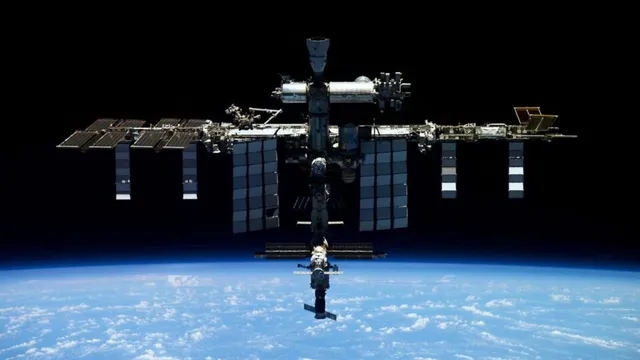- By Supratik Das
- Fri, 18 Apr 2025 04:25 PM (IST)
- Source:JND
Members of NASA's Aerospace Safety Advisory Panel (ASAP) have expressed "deep concern" regarding the International Space Station's (ISS) future, stating that the aging station has entered the "riskiest period of its history." In an April 17 public meeting, the panel pointed to growing technical problems, catastrophic budget gaps, and uncertainties regarding the safe retirement of the station by 2030. Panel member Rich Williams noted that threats to the ISS have grown because of long-standing structural problems and a lack of firm action. He noted ongoing cracking in the vestibule of the Russian Zvezda module, which is called PrK. Although years of shared studies by NASA and Roscosmos have yet to determine the cause, the mitigation measures, like restricting repressurization, are only temporary.
Lack of Deorbit Readiness Poses Public Risk
One of the panel's most pressing alerts is regarding NASA's development of the United States Deorbit Vehicle (USDV), being constructed by SpaceX to escort the ISS into Earth's atmosphere safely after its mission. If the ISS needs to be deorbited before the USDV can be implemented, the danger to public safety due to debris could rise "by orders of magnitude," Williams stated. NASA is requesting 180 million USD for the USDV, with the total cost projected to be near 1 billion USD. However, funding uncertainty looms large. “The deorbit vehicle is not optional,” warned panel member David West. “It must be adequately funded in time.”
The larger concern is that the current NASA budget could be inadequate to fund ISS operations as well as its bold proposal to switch to commercial low Earth orbit (LEO) space stations. The 2024 NASA operating plan budgets 993 million USD for ISS operations and maintenance, but ASAP cautions that competing requirements like commercial LEO development and USDV funding are thinning resources perilously close to a breaking point. The panel's 2024 report emphasizes that diverting funds from ISS operations to enable commercial activities might jeopardize safety. Patricia Sanders, chair of ASAP, emphasized the stakes: "The day will come when the ISS reaches end of life, and we may not be able to dictate that date. This needs to be resourced—now."
Recommended For You
Commercial Space Transition Faces Tight Timeline
NASA wants to relinquish LEO operations to the private sector in 2030. But ASAP doubts the ability of commercial space stations, stating inadequate business cases, regulatory concerns, and slowness to proceed. Recent efforts by Blue Origin, Sierra Space, Voyager Space, and Axiom Space are at different stages of development, uncertain whether they may come online in time before ISS is retired.
With aging assets, increasing risk, and fiscal uncertainty, human spaceflight's future in low Earth orbit remains uncertain. The warning of NASA's safety panel is stark: bold action and strong funding are needed to prevent a possible catastrophe.






